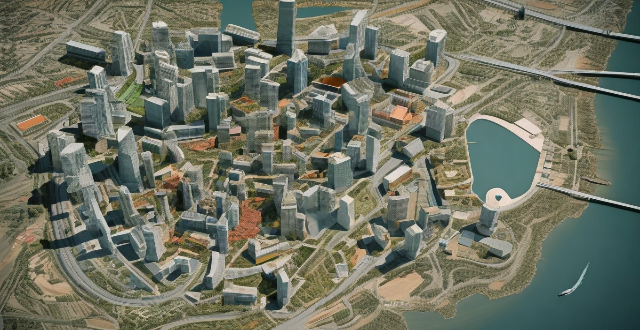Coastal cities and communities are adapting to global warming challenges through various strategies, including elevated building standards, ecosystem-based adaptation, community planning and education, economic diversification, and policy and legislation. These efforts aim to make these areas more resilient in the face of rising sea levels, increased storm frequency and intensity, and changing precipitation patterns.

Adapting to the Challenges Posed by Global Warming in Coastal Cities and Communities
Global warming poses significant challenges for coastal cities and communities around the world. Rising sea levels, increased frequency and intensity of storms, and changing precipitation patterns are just some of the impacts that these areas are facing. However, there are various strategies being implemented to adapt to these challenges and mitigate their effects. Here are some key ways coastal cities and communities are adapting:
Elevated Building Standards
Building Codes and Zoning Regulations
- Floodplain Zoning: Restricting development in flood-prone areas.
- Elevated Construction: Building structures on stilts or pilings above potential flood levels.
- Waterproofing Materials: Using materials that can withstand prolonged exposure to water.
Resilient Infrastructure Design
- Stormwater Management: Implementing green infrastructure like rain gardens and permeable pavements to manage runoff.
- Seawalls and Breakwaters: Constructing barriers to protect against storm surges and erosion.
- Elevated Roads and Bridges: Raising critical transportation infrastructure above anticipated flood levels.
Ecosystem-Based Adaptation
Restoration of Natural Habitats
- Wetland Restoration: Re-establishing wetlands to act as natural buffers against storm surges and sea level rise.
- Mangrove Planting: Planting mangroves to stabilize shorelines and reduce erosion.
- Beach Nourishment: Replenishing sand on beaches to maintain their width and height, protecting against erosion.
Protection of Biodiversity
- Conservation Areas: Establishing marine protected areas to safeguard biodiversity hotspots.
- Habitat Connectivity: Ensuring that habitats are connected to allow species migration in response to changing conditions.
Community Planning and Education
Climate Change Education Programs
- Public Awareness Campaigns: Educating residents about the risks of global warming and how to prepare for extreme weather events.
- School Curriculum Integration: Including climate change education in school curriculums to foster awareness from a young age.
Emergency Response Plans
- Evacuation Routes: Clearly marking and maintaining evacuation routes for quick departure during emergencies.
- Warning Systems: Developing effective warning systems for impending weather threats.
Economic Diversification
Diversifying Local Economies
- Tourism Adaptation: Shifting tourism offerings to focus on eco-tourism and nature-based experiences that are resilient to climate change.
- Sustainable Fisheries: Supporting sustainable fishing practices that can withstand environmental changes.
Job Training Programs
- Green Jobs: Providing training for jobs related to renewable energy, conservation, and sustainability.
- Disaster Preparedness Training: Preparing local workforce for roles in disaster response and recovery efforts.
Policy and Legislation
Climate Change Policies
- Carbon Emission Reduction Targets: Setting and enforcing targets for reducing carbon emissions at a local level.
- Renewable Energy Mandates: Promoting the use of renewable energy through policies and incentives.
Funding and Financial Mechanisms
- Grants and Subsidies: Providing financial support for adaptation projects and infrastructure upgrades.
- Insurance Schemes: Developing insurance products that account for climate risks and encourage proactive adaptation measures.
In conclusion, coastal cities and communities worldwide are adopting a multifaceted approach to adapt to the challenges brought about by global warming. Through elevated building standards, ecosystem-based adaptation, community planning and education, economic diversification, and robust policy and legislation, these areas strive to become more resilient in the face of ongoing and future changes to our climate.